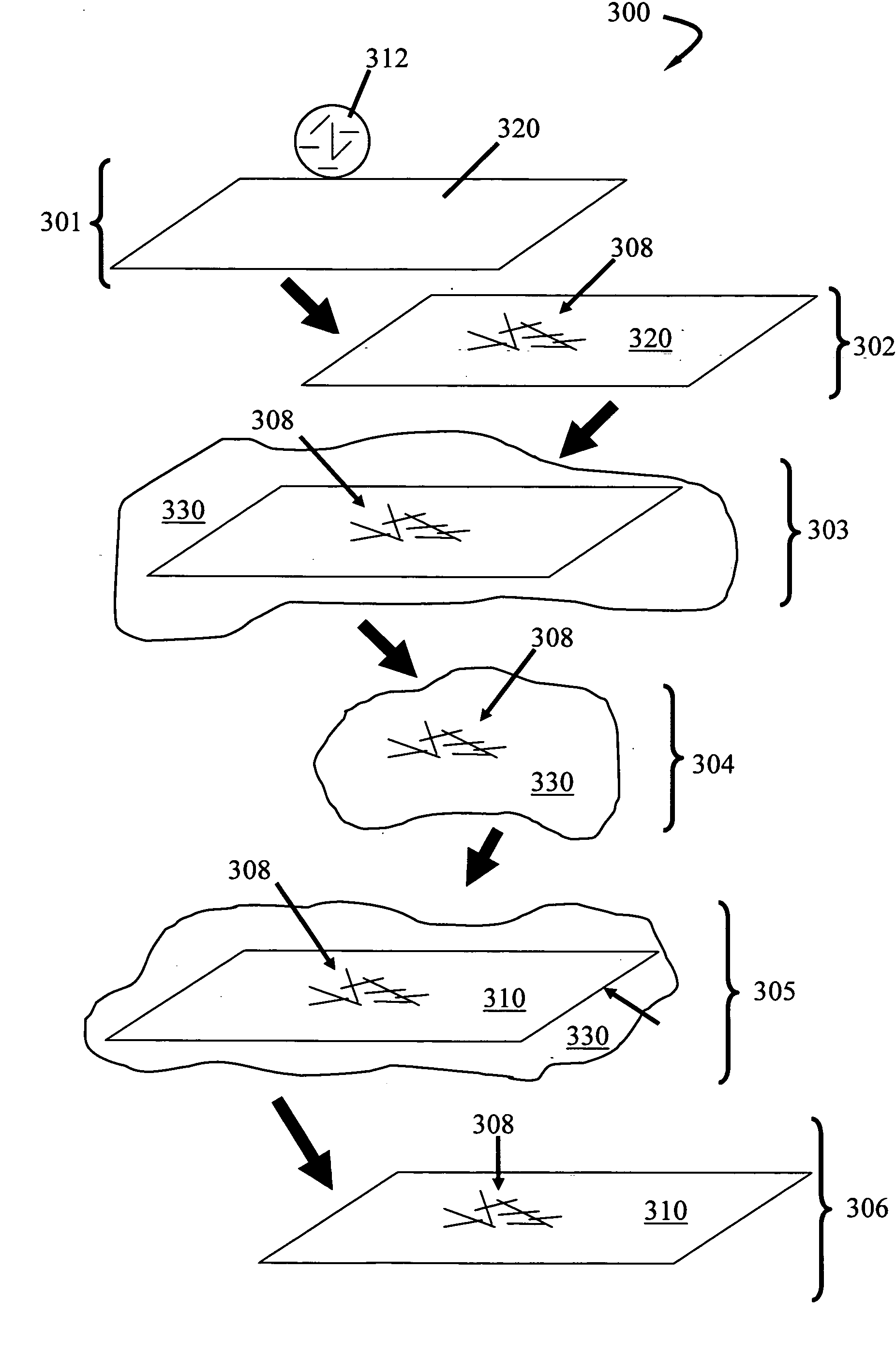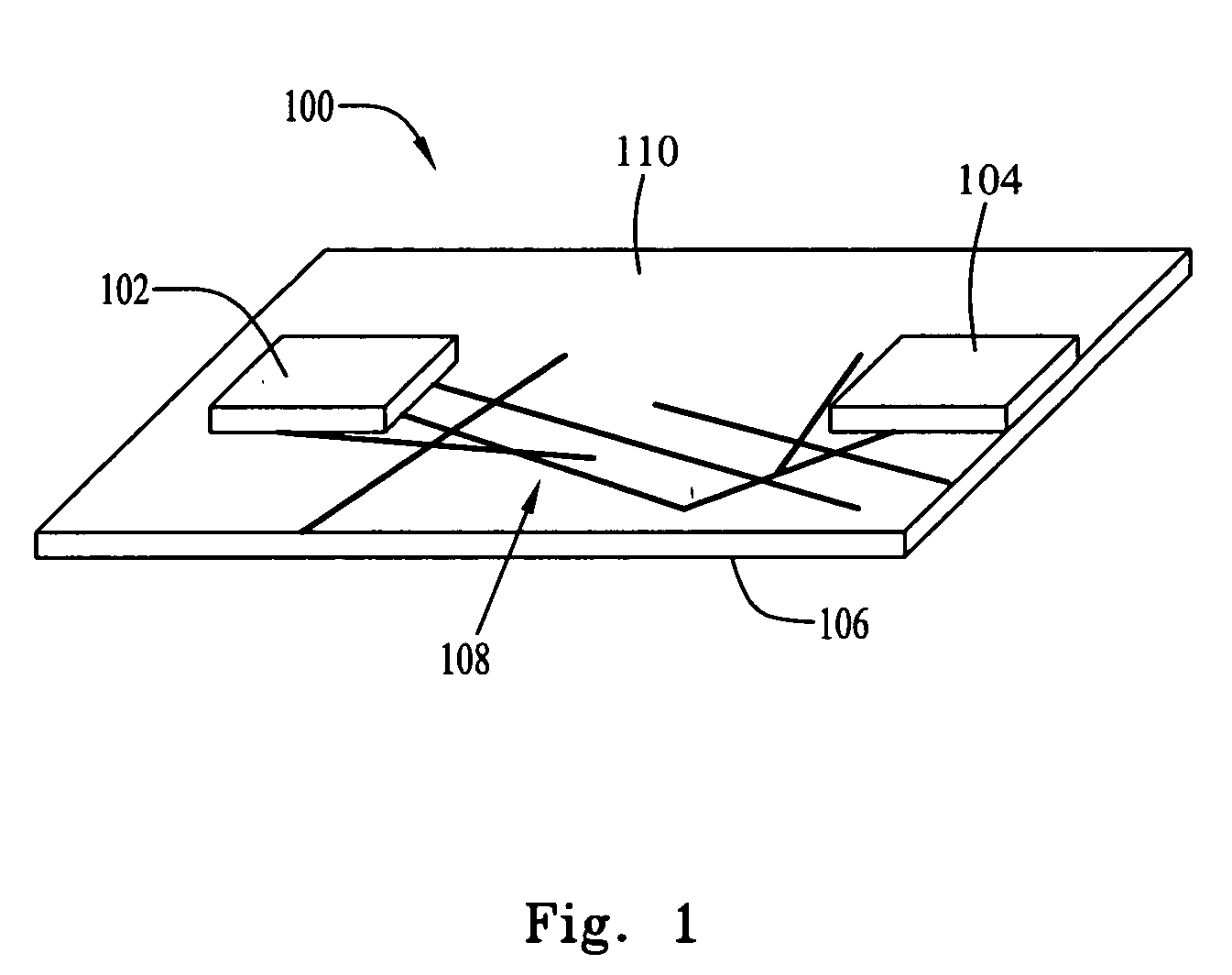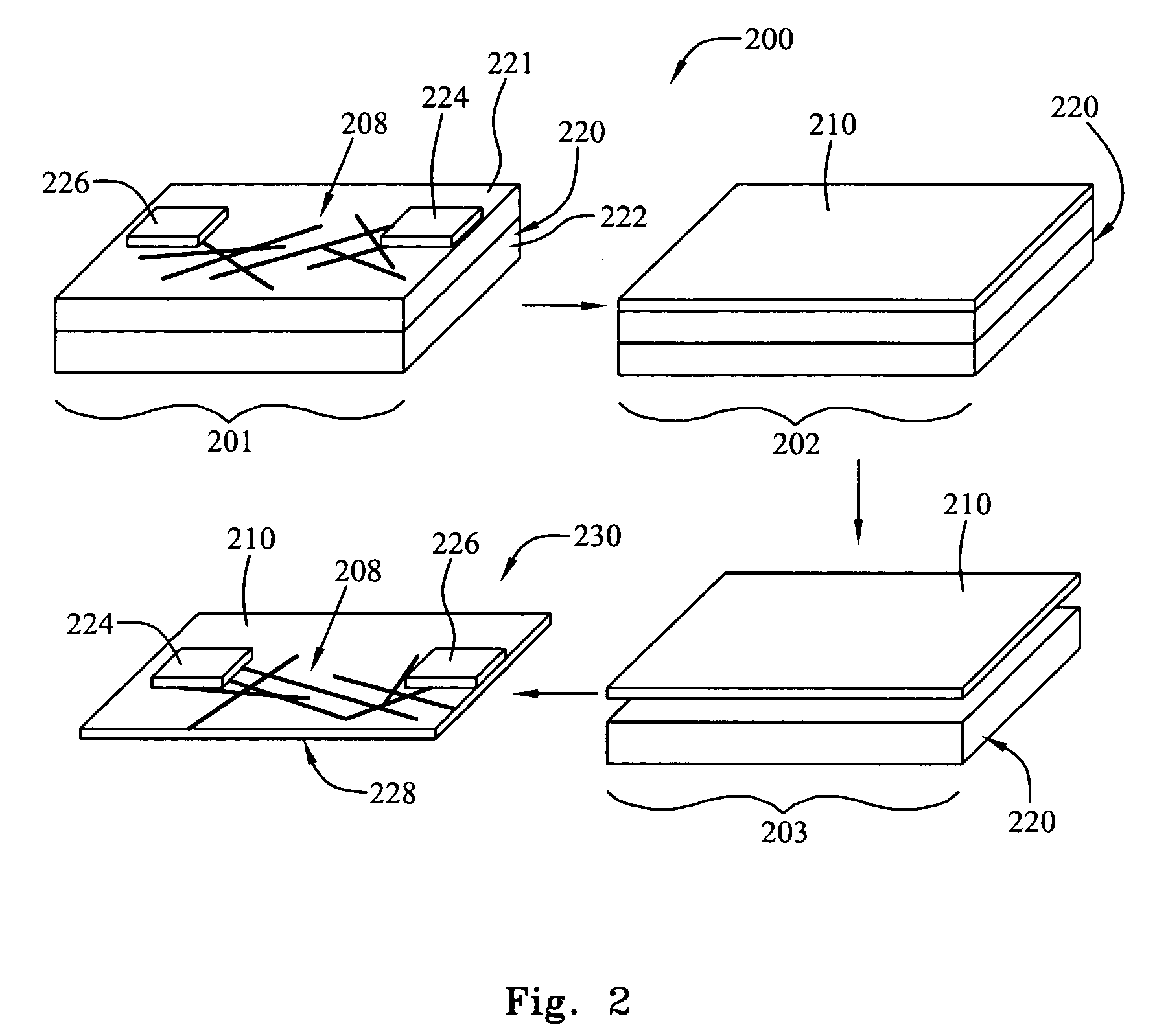Flexible nanostructure electronic devices
a flexible nanostructure and electronic device technology, applied in the direction of nanoinformatics, discharge tube/lamp details, discharge tube luminescnet screens, etc., can solve the problems of low transconductance of these devices, extremely low carrier mobilities of organic materials, and slow flexible electronics
- Summary
- Abstract
- Description
- Claims
- Application Information
AI Technical Summary
Benefits of technology
Problems solved by technology
Method used
Image
Examples
example a
[0044] A nanotube network was grown by chemical vapor deposition on a silicon substrate with a 200 nm silicon oxide coating, as described in U.S. patent application Ser. No. 10 / 177,929, filed Jun. 21, 2002 by Gabriel et al., which is hereby incorporated by reference, in its entirety. Then the silicon substrate with the network was patterned with optical lithography, and a liftoff process, to form 100 μm square metal contacts. The metal contacts comprised a 3.5 nm thick titanium film covered by a 50 nm thick gold film. After liftoff, the silicon substrate with network and metal contacts was spin-coated with polyimide (HD 2610, 500 rpm). The silicon substrate was heated at 90° C. for 10 minutes, 120° C. for 5 minutes, and 200° C. for 30 minutes to cure the polyimide. Finally, the silicon substrate was immersed in 10% hydrofluoric acid (HF) for 8 hours. The polyimide films, floating freely in the HF solution, were removed and rinsed with deionized water.
[0045] A device on a flexible s...
example b
[0047] A nanotube solution was made using nanotubes grown by laser ablation. To make the solution, nanotubes were dispersed in 10:1 dimethylbenzene:dichlorobenzene solution using a high-powered ultrasonicator. The concentration of nanotubes was between 1 mg / L and 5 mg / L. The solution was placed on an alumina membrane (Whatman, 0.2 μm pore size), and a pump was used to draw the solvent through the membrane. A uniform nanotube film was found deposited on the membrane. While the membrane was still damp with solvent, a chamber underneath the membrane was filled with deionized water. When the water reached the membrane, the nanotube film was observed to float free of the membrane. The film floated on the water surface in the form of large rafts. At this point, the device substrate was slipped into the water under the rafts, then the pump was used to remove the water. As the water disappeared, the rafts were redeposited on the substrate.
PUM
| Property | Measurement | Unit |
|---|---|---|
| concentration | aaaaa | aaaaa |
| concentration | aaaaa | aaaaa |
| pore size | aaaaa | aaaaa |
Abstract
Description
Claims
Application Information
 Login to View More
Login to View More - R&D
- Intellectual Property
- Life Sciences
- Materials
- Tech Scout
- Unparalleled Data Quality
- Higher Quality Content
- 60% Fewer Hallucinations
Browse by: Latest US Patents, China's latest patents, Technical Efficacy Thesaurus, Application Domain, Technology Topic, Popular Technical Reports.
© 2025 PatSnap. All rights reserved.Legal|Privacy policy|Modern Slavery Act Transparency Statement|Sitemap|About US| Contact US: help@patsnap.com



